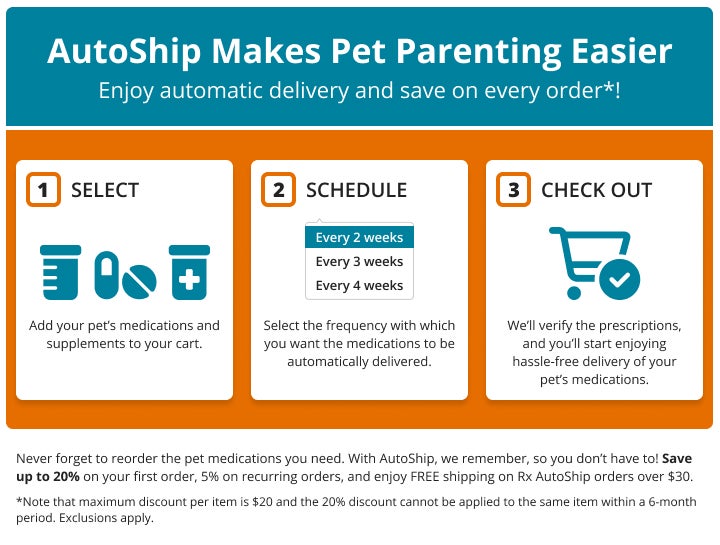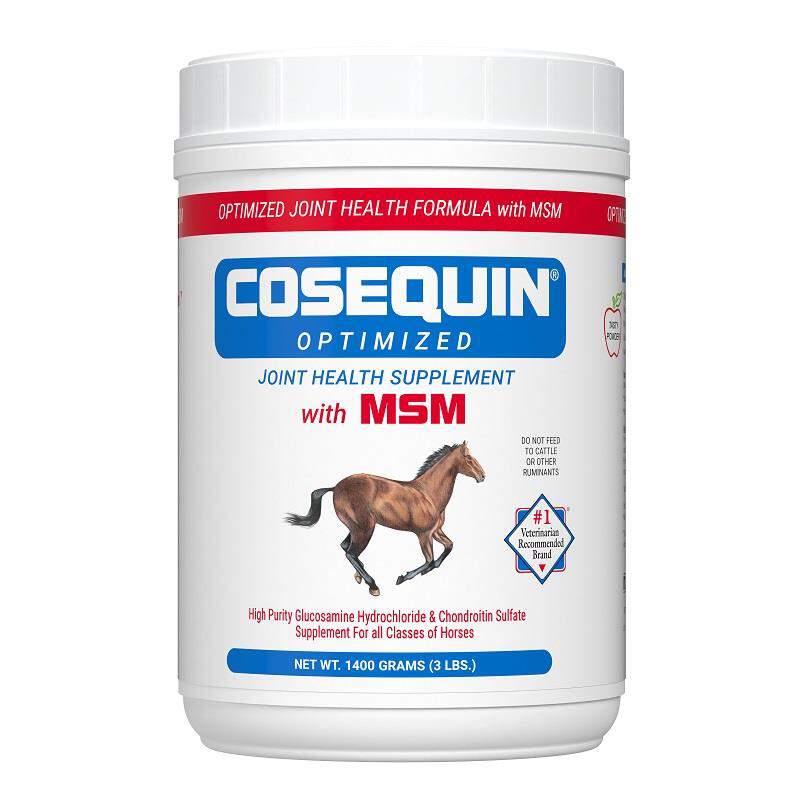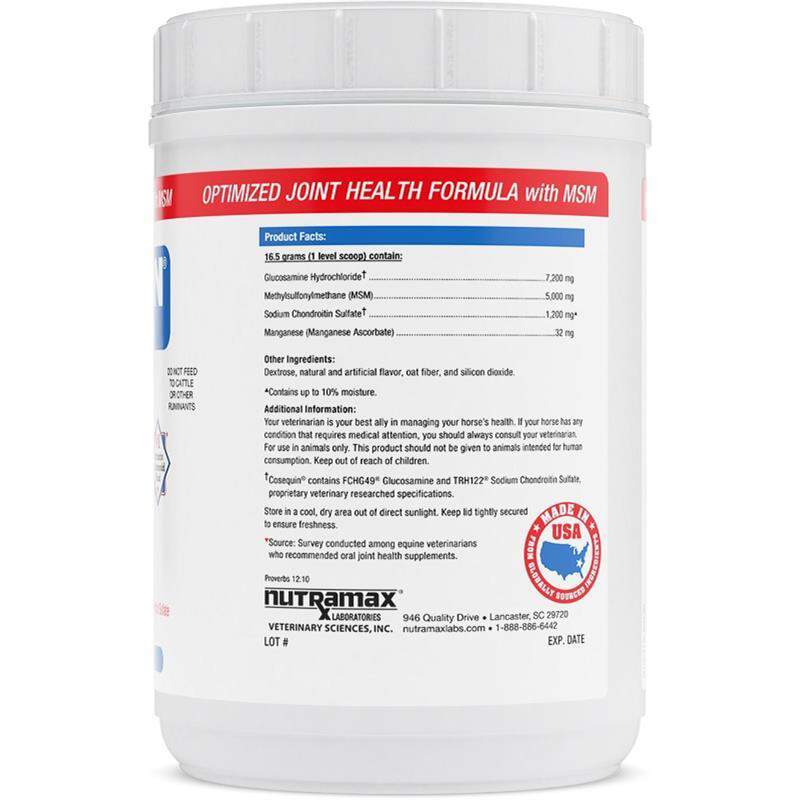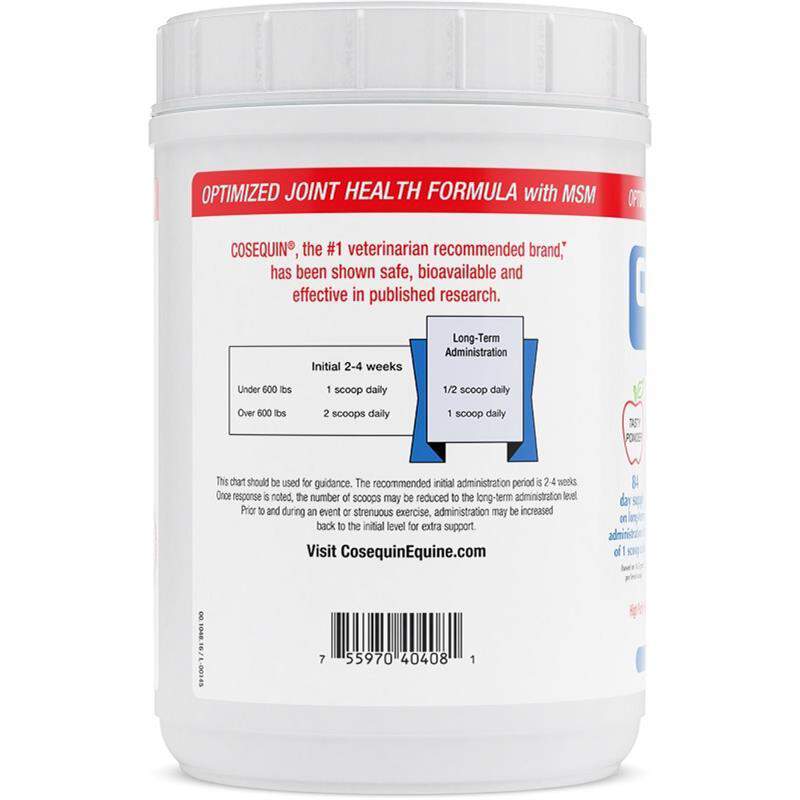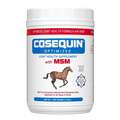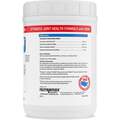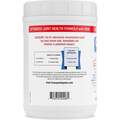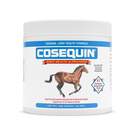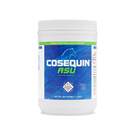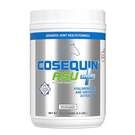Cosequin Optimized w/MSM Equine Powder Description
Cosequin Optimized Equine Powder with MSM contains a high concentration of active ingredients that are proven beneficial for active horses. Cosequin with Methylsulfonylmethane (MSM) contains a patented blend of MSM, manganese ascorbate, purified chondroitin sulfate, and glucosamine for optimal joint function.
What is Cosequin Optimized w/MSM Equine Powder?
Cosequin Optimized Formula with MSM contains higher levels of active ingredients to benefit more active horses, plus MSM to address osteoarthritis or pain. Cosequin with MSM is a patented combination of glucosamine, purified chondroitin sulfate and manganese ascorbate, and MSM for optimal function of the skeletal joints.
Which animals/pets is Cosequin Optimized w/MSM Equine Powder for?
For use in horses.
Cosequin Optimized w/MSM Equine Powder uses
Features of Cosequin Optimized Equine Powder with MSM:
- Contains optimal levels of highly pure MSM (methylsulfonylmethane) and the same chondroitin sulfate and glucosamine levels as the original formula
- Delivers higher active ingredient levels in each scoop
- Delicious apple flavor makes the powder easy to administer
What does Cosequin Optimized w/MSM Equine Powder do?
Methylsulfonylmethane is organically-sourced sulfur, which is a useful compound within the cartilage. MSM is frequently recommended by veterinarians for joint health management.
Cosequin Optimized w/MSM Equine Powder ingredients
Glucosamine HCl
Sodium Chondroitin Sulfate
Cosequin Optimized w/MSM Equine Powder overdose: What to do?
Contact your nearest emergency animal clinic.
What to know before using Cosequin Optimized w/MSM Equine Powder
- Not for use in any ruminant, including cattle.
- Keep out of reach of animals and children.
- Not for use in animals intended for food slaughter.
- Only for use in animals.
How is Cosequin Optimized w/MSM Equine Powder sold?
1400 gm container
Nutramax Laboratories, Inc
Tips for using Cosequin Optimized w/MSM Equine Powder
This formula is a particularly excellent choice for horses with moderate levels of activity, including the following disciplines:
Initial Administration: Horses over 600 lbs - 2 level scoops once a day Horses under 600 lbs. - 1 level scoops once a day Overly large horses (warmbloods, draft breeds) may need 3 or 4 scoops once a day
Long Term Administration: Horses over 600 lbs - 1 level scoops once a day Horses under 600 lbs. - 1/2 level scoops once a day Overly large horses (warmbloods, draft breeds) may need 2 or 3 scoops once a day
Two Level Scoops (33 grams) contain:
Glucosamine HCl …………………………………………………………………………..14,000 mg
Sodium Chondroitin Sulfate……………....…………………………………………….…..2,400 mg
Ascorbic Acid……………………………………………………………………………….420 mg Manganese………………………………………………………………………………… 64 mg
Methylsulfonylmethane (MSM)…………………………………………………….. 10,000 mg
Other Ingredients: oat fiber, natural and artificial apple flavor, dextrose.
Horse Joints
The skeletal system of a horse has three major functions in the body. It protects vital organs; provide framework and supports soft parts of the body. Horses typically have 205 bones, with the pelvic limb containing 19 and the thoracic limb containing 20. Horse bones act as levers; they store minerals and are the site of red blood cell formation. They can be classified into five categories long bones, short bones, flat bones, irregular bones, and sesamoids. The location where these bones come together is the joint. Movement of a horse is dependent on joints of various types.
The internal pressure building as a result of swollen tissues brings about pain. This inflammation can occur as a result of:
·Repeated trauma.
·Stress to the joint.
·Everyday use.
·Athletic training.
·Incorrect shoeing.
·Excess weight.
Symptoms of joint pain include:
·Lameness
·Swelling
·Heat (usually felt on the fetlock or joint)\
·Raised foot (not wanting to stand on the joint)
If you notice your horse avoiding standing on a leg, or limping call you veterinarian immediately. When calling, be sure to state when the horse first started showing signs of discomfort and any swelling visible to the eye. The veterinarian will most likely prescribe treatment with anti-inflammatories; however some of these medications have side effects. Be sure to ask your vet to explain the medication and potential risks as well as any supplements that can help.
Those supplements are:
It is very important to keep this in consideration especially if your horse is a performance horse. Performance horses, like human athletes, place a high amount of stress on their bones and joints. This is especially true if the horse jumps, gallops, or performs sudden turns or changes of pace, as can be seen in racehorses, show jumpers, eventers, polo ponies, reiners, and western performance horses. A high percentage of performance horses develop arthritis, especially if they are worked intensely when young or are worked on poor footing. One of the goals for management for these horses often involves caring for the joints to reduce the progression of arthritis. This usually includes a close monitoring of the animal's schedule to determine how to reduce the amount of joint concussion he experiences and feeding him these very effective supplements.




